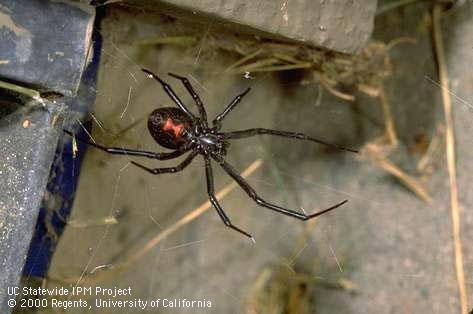
Unlike mosquitoes, spiders do not seek people in order to bite them. Generally, a spider doesn't try to bite a person unless it has been squeezed, lain on, or similarly provoked to defend itself. Moreover, the jaws of most spiders are so small that the fangs cannot penetrate the skin of an adult person. Sometimes when a spider is disturbed in its web, it may bite instinctively because it mistakenly senses that an insect has been caught.
The severity of a spider bite depends on factors such as the kind of spider, the amount of venom injected, and the age and health of the person bitten. A spider bite might cause no reaction at all, or it might result in varying amounts of itching, redness, stiffness, swelling, and pain—at worst, usually no more severe than a bee sting. Typically, the symptoms persist from a few minutes to a few hours. Like reactions to bee stings, however, people vary in their responses to spider bites, so if the bite of any spider causes an unusual or severe reaction, such as increasing pain or extreme swelling, contact a physician, hospital, or poison control center (in California, the number is 1-800-222-1222).
Sometimes a person may not be aware of having been bitten until pain and other symptoms begin to develop. Other species of arthropods whose bites or stings may be mistaken for that of a spider include ticks, fleas, bees, wasps, bed bugs, mosquitoes, the conenose (kissing) bug (Triatoma protracta), deer flies, horse flies, and water bugs (Lethocerus spp.).
For first aid treatment of a spider bite, wash the bite, apply an antiseptic to prevent infection, and use ice or ice water to reduce swelling and discomfort. Bites or stings from a variety of arthropods can result in an itching wound. Rather than scratching, if necessary, try to relieve the itch with medication. Scratching can break the skin and introduce bacterial infection, which you or even a physician may mistake for an arachnid bite. If you receive a bite that causes an unusual or severe reaction, contact a physician. If you catch the critter in the act, save it for identification, preserve it (or whatever parts of it remain), and take it to your county UC Cooperative Extension office. If no one there can identify it, ask that it be forwarded to a qualified arachnologist.
[Excerpted from the UC IPM publication Pest Notes: Spiders, written by Rick S. Vetter.]